31 Wholesome Spanish Soups for Your Culinary Journey
Spanish soups represent a delightful culinary journey through regions rich with flavor and tradition.
Warm, comforting bowls showcase the diverse ingredients that define Spain's gastronomic landscape.
Crafted with passion and regional wisdom, these recipes tell stories of cultural heritage and family connections.
Mediterranean influences dance across each carefully prepared dish, highlighting local produce and time-honored cooking techniques.
Regional variations demonstrate the incredible creativity and adaptability of Spanish cuisine, where simplicity meets sophistication.
Chefs and home cooks alike transform humble ingredients into extraordinary culinary experiences that nourish both body and soul.
Each recipe offers a glimpse into the vibrant and nuanced world of Spanish cooking traditions: 31 Signature Spanish Soups await your exploration:
Signature Spanish Soups for Every Season
Spanish soups are as varied as the landscapes of Spain itself. Cold gazpachos and rich stews invite you to enjoy the country’s freshest ingredients, no matter the weather.
Porra Antequerana
Porra Antequerana represents a rustic Spanish cold soup from Malaga, traditionally prepared by peasants using simple, available ingredients.
Rural families blended stale bread, ripe tomatoes, robust olive oil, and fragrant garlic into a smooth mixture using a mortar and pestle.
Spanish cooks transformed this humble dish from a warm soup to a refreshing appetizer or tapa served chilled.
Hard-boiled eggs and ham pieces provide protein and depth to the soup's creamy texture.
Modern variations often include tuna as a flavorful topping.
Regional chefs continue to honor the original recipe while experimenting with subtle ingredient adjustments.
Each spoonful reflects Antequera's agricultural heritage and resourceful cooking traditions.
Summer temperatures make this soup an ideal light meal for Spanish communities.
Salmorejo
Salmorejo is a velvety cold soup originating from Andalusia, Spain, that transforms simple ingredients into a luxurious summer staple.
Rich tomato puree blends seamlessly with bread, creating a silky smooth texture that cools you down instantly.
Spanish ham and hard-boiled eggs typically crown this vibrant red dish, adding protein and visual appeal.
Garlic, olive oil, and vinegar infuse the soup with deep Mediterranean flavors.
Restaurants across southern Spain serve salmorejo as both a refreshing appetizer and a light main course.
Home cooks often prepare this dish during hot months when tomatoes are at their peak ripeness.
Traditional recipes pass through generations, maintaining the authentic preparation method.
Regional variations exist, but the core ingredients remain consistent across Andalusian kitchens.
Ajoblanco
Ajoblanco is a refreshing Andalusian cold almond soup originating from Moorish middle ages, predating tomato-based gazpacho by centuries.
Moorish settlers crafted this innovative soup using stale bread, vinegar, water, abundant regional almonds, and fresh garlic as core ingredients.
Modern recipes often incorporate milk and green grapes for added complexity and texture.
Marcona almonds provide the most authentic flavor when available.
Traditional preparation involves pureeing ingredients into a smooth, creamy consistency.
Spanish home cooks serve this soup well-chilled as a perfect summer starter.
Olive oil drizzle and toasted almond garnish enhance its rich, nutty profile.
Mediterranean culinary traditions shine through this simple yet sophisticated dish.
Gazpacho
Gazpacho is a refreshing cold Spanish soup blending ripe tomatoes, cucumbers, onions, peppers, croutons, vinegar, and olive oil into a vibrant summer staple.
Originating as a cooling lunch for field workers during scorching summers, this iconic dish quickly became a beloved Spanish appetizer across regions.
Workers' wives initially prepared gazpacho to help their husbands beat intense heat, transforming it from a practical meal to a national culinary treasure.
Mediterranean ingredients create its signature tangy flavor, perfectly balancing acidity and freshness.
Regional variations like gazpacho blanco from Malaga showcase the soup's versatility, featuring unique ingredients such as garlic, bread, and almonds.
Spanish kitchens pride themselves on unique gazpacho recipes, each reflecting local agricultural traditions.
Summer tables frequently feature this chilled soup as a light, nutritious starter.
Rich in vegetables and low in calories, gazpacho represents Spanish cuisine's simplicity and genius.
Caldo Gallego
Caldo gallego is a robust Spanish soup brimming with rustic flavors and peasant heritage from Galicia's rural regions.
Regional farmers developed this warming broth as a nutrient-dense meal using ingredients directly from their land and livestock.
White beans, collard greens, potatoes, and various meat products like chorizo and ham create its signature earthy profile.
Traditional preparation involves simmering ingredients in large pots with rich pork-based broths.
Families often serve this hearty soup in classic earthen bowls called cuncas during cold winter months.
Each region adds unique touches to the recipe, reflecting local agricultural traditions.
Generations have passed down this economical and nourishing dish as a testament to Galician culinary resilience.
Minimal ingredients and simple cooking techniques define this soul-satisfying Spanish comfort food.
Sopa De Ajo
Sopa de ajo exemplifies Spanish comfort cuisine with its rich garlic-infused broth that transforms simple ingredients into a warming meal.
Spanish home cooks craft this traditional soup by sautéing garlic in olive oil and paprika, creating a deeply aromatic base.
Whisked or poached eggs add protein and texture to the soup, while stale bread provides heartiness and helps thicken the liquid.
Cooks can use chicken broth, vegetable broth, or water as the soup's foundation.
Good Friday morning traditionally sees families enjoying this warming dish, which connects generations through its straightforward preparation.
Croutons and fresh parsley serve as elegant garnishes that enhance the soup's visual appeal.
Grilled bread typically accompanies the soup, offering an additional layer of flavor and texture.
Each spoonful delivers a comforting blend of rustic ingredients that showcase Spain's culinary simplicity.
Gazpachuelo
Gazpachuelo is a comforting Spanish soup from Malaga that transforms humble ingredients into a rich maritime experience.
Fishermen originally crafted this hearty dish using simple seafood, fish stock, and locally available ingredients like potatoes and garlic.
Mayonnaise and egg yolks create a creamy base that distinguishes gazpachuelo from other regional soups.
Wine vinegar adds a subtle tangy undertone to the broth's complex flavor profile.
Shrimps and clams now enhance the soup's maritime character, elevating its original working-class origins.
Winter meals typically feature gazpachuelo served alongside toasted bread and hard-boiled eggs for added texture and warmth.
Regional variations reflect Malaga's coastal culinary traditions.
Home cooks and restaurants continue to prepare this traditional soup, celebrating its rustic maritime heritage.
Sopa De Almendras
Sopa de almendras represents a luxurious Spanish soup blending Mediterranean ingredients with rich medieval culinary traditions.
Spanish home cooks transform skinned almonds, garlic, and stale bread into a creamy, aromatic preparation dating back to Moorish influences.
Mediterranean regions like Valencia and Andalusia popularized this elegant soup as a Christmas Eve starter.
Blanched almonds get fried with saffron and garlic before blending with stock, cumin, and vinegar.
Traditional garnishes include toasted almonds, fresh mint, and crispy croutons.
Warm spices like peppercorns and cinnamon enhance the soup's complex flavor profile.
Spain's historical cooking methods shine through this nutty, smooth soup.
Winter celebrations often feature this comforting almond-based first course.
Olla De Trigo
Olla de trigo represents a hearty Spanish soup originating from Almeria, featuring a robust blend of whole wheat, chickpeas, and robust meats like bacon, chorizo, and morcilla.
Pimenton and hot chili peppers infuse the dish with intense spicy flavors, while fried bread pounded with spices adds textural complexity and depth.
Spanish families traditionally prepare this warming soup during cold winter months as a nourishing meal.
Fennel contributes a subtle herbal note to the rich broth, complementing the smoky meat flavors.
Cooks often serve the soup in deep plates, sometimes accompanied by a splash of vinegar to aid digestion.
Each spoonful delivers a complex medley of traditional Spanish ingredients and rustic cooking techniques.
Regions around Almeria consider this soup a staple winter comfort food.
Regional variations might include slight modifications to the original recipe, reflecting local ingredient availability.
Porrusalda
Porrusalda stands as a rustic Basque vegetable soup brimming with simple, wholesome ingredients that warm the soul on chilly days.
Leeks dominate this traditional Spanish recipe, creating a rich base alongside potatoes, carrots, and onions that simmer together in a comforting broth.
Salt-cod frequently enriches the soup's flavor profile, adding depth and protein to the vegetable medley.
Garlic and salt provide essential seasoning that elevates the soup's subtle taste.
Spanish regions like La Rioja and Castilla y Leon have embraced this hearty dish beyond its Basque origins.
Home cooks prepare porrusalda with minimal ingredients, highlighting the beauty of uncomplicated cooking.
Chopped parsley offers a fresh garnish that brightens the soup's earthy tones.
Families often enjoy this soup as a nourishing meal during cooler seasons, celebrating regional culinary traditions.
Menestra De Verduras
Menestra de verduras represents a hearty vegetable medley from Spain that adapts seamlessly between soup, stew, and side dish configurations.
Spanish kitchens transform seasonal vegetables like asparagus, peas, artichokes, green beans, and potatoes into a robust one-pot meal that celebrates fresh produce.
Regional variations across Spain introduce unique ingredient combinations and cooking methods.
Home cooks typically simmer vegetables in olive oil and garlic, creating rich layers of flavor.
Mediterranean influences shine through the dish's simple preparation and ingredient selection.
Protein additions like ham or eggs can enhance the vegetable base.
Traditional recipes often include white beans or olives for extra texture.
Spanish families serve menestra as a comforting meal that connects generations through shared culinary heritage.
Gazpacho De Mango
Mango gazpacho represents a vibrant Spanish cold soup bursting with tropical flavors and refreshing ingredients.
Spanish culinary traditions inspire this chilled blend of ripe mangoes, cucumbers, tomatoes, and peppers.
Jalapeños and onions add a subtle heat and complexity to the smooth mixture.
Olive oil creates a silky texture while citrus juices like orange or lime provide necessary acidity.
Fresh herbs such as cilantro or basil enhance the soup's bright flavor profile.
Home cooks and restaurants prepare this version by carefully dicing and blending raw ingredients.
Vinegar sometimes replaces citrus for additional tanginess.
Summer meals welcome this cool, nutrient-packed soup as a perfect appetizer or light lunch option.
Caldo De Papas
Caldo de papas is a warming potato soup originating from Spain's Canary Islands, known for its rich, comforting flavors and simple preparation.
Spanish islanders traditionally craft this rustic dish using fresh local ingredients like potatoes, onions, tomatoes, and bell peppers.
Saffron adds a distinctive golden color and earthy aroma to the soup, elevating its basic profile.
Cilantro provides a fresh herbal note that brightens the overall taste.
Home cooks carefully simmer the vegetables until potatoes become tender and soft.
Raw eggs are gently cracked into the hot broth near the end of cooking, creating delicate strands that enrich the soup's texture.
Salt and pepper season the dish, balancing its natural vegetable sweetness.
Regional variations may include additional ingredients like garlic or different herbs depending on family traditions.
Mazamorra
Mazamorra stands as a refreshing cold soup from Andalusia that transforms humble ingredients into a creamy culinary experience.
Southern Spanish regions like Cordoba traditionally prepare this dish using simple components such as bread, garlic, olive oil, salt, and vinegar.
Ground almonds provide a distinctive thickening agent that gives mazamorra its signature smooth texture.
Cold serving temperatures make this soup particularly appealing during intense summer heat.
Garnishes like hard-boiled eggs, diced apples, grapes, or ham pieces add delightful complexity to the base.
Regional variations exist across different Andalusian communities, each offering subtle flavor nuances.
Mediterranean influences shine through in its straightforward preparation method.
Caldillo De Pintarroja
Caldillo de pintarroja is a robust Malaga seafood soup brimming with Mediterranean flavors and coastal traditions.
Southern Spanish fishermen crafted this hearty dish using fresh dogfish caught directly from Mediterranean waters.
Almonds, bread, and garlic form the soup's rich foundational base, creating a complex flavor profile unique to coastal Andalusian cuisine.
Hot peppers and saffron provide warmth and depth to the briny mixture.
Clams and tomatoes add additional maritime richness to the preparation.
Wine contributes subtle complexity to the brewing process.
Lemon juice balances potential spiciness, offering a bright counterpoint to the soup's intense flavors.
Winter months make this soup particularly comforting for locals seeking warmth and sustenance.
Sopa De Picadillo
Sopa de picadillo embodies Andalusian comfort cuisine through its simple yet satisfying clear broth brimming with protein-rich ingredients.
Spanish home cooks craft this soup by simmering beef or chicken stock with delicate vermicelli noodles and savory jamon serrano.
Crushed hard-boiled eggs add texture and richness to the broth's light base.
Salt enhances the soup's subtle flavors while balancing the ham's intense saltiness.
Family members traditionally gather around the table, each person sprinkling chopped eggs into their individual bowls.
Regional variations might include different meat selections or additional seasonings.
Generations have passed down this warming recipe through centuries of Spanish culinary tradition.
Regional ingredients and personal touches make each sopa de picadillo unique to its creator.
Arros Brut
Arros brut stands as a rustic Mallorcan rice stew brimming with rich flavors from multiple meats and seasonal vegetables.
Hunters originally crafted this hearty one-pot meal using available game and wild ingredients from Mallorca's countryside.
Chicken, rabbit, and sometimes wild boar create a robust protein base for the dish.
Mushrooms, peas, red peppers, and green beans add depth and texture to the rice preparation.
Traditional cooks simmer ingredients in abundant water, ensuring a soupy consistency that distinguishes arros brut from drier rice dishes.
Spanish culinary traditions deeply influence this regional specialty, which reflects Mallorca's agricultural heritage.
Home kitchens and small restaurants across the island prepare this comforting meal using generational recipes.
Mediterranean cooking techniques and local produce define the unique character of this beloved Balearic Islands classic.
Gazpacho De Trigueros
Gazpacho de trigueros is a rustic Spanish soup celebrating wild asparagus from Extremadura, blending fresh seasonal ingredients into a cool, refreshing liquid feast.
Wild asparagus strips sautéed in olive oil form the soup's core flavor profile, creating a unique vegetable-based dish that transforms simple ingredients into a complex meal.
Stale bread chunks add texture and thickness to the soup, while hard-boiled eggs provide protein and richness.
Garlic introduces sharp notes that balance the asparagus's delicate taste.
Red wine vinegar contributes a tangy brightness that cuts through the soup's earthiness.
Olive oil ensures smooth consistency and adds Mediterranean depth to each spoonful.
Water helps blend all components into a harmonious mixture.
Salt serves as the final touch, enhancing every subtle flavor in this traditional regional preparation.
Rancho Canario
Rancho canario embodies a robust Canary Islands soup brimming with hearty ingredients that transform simple components into a rich, satisfying meal.
Spanish island families traditionally prepare this thick stew using local meats like chicken and beef alongside diverse vegetables including potatoes, carrots, and onions.
Chorizo sausage and smoked ribs add deep, smoky flavors to the broth, while chickpeas provide substantial texture and protein.
Aromatic spices such as saffron, paprika, cumin, and garlic infuse each spoonful with complex warmth and depth.
Home cooks across Gran Canaria and Tenerife create unique variations, ensuring no two versions taste exactly.
Mediterranean and Spanish culinary influences shine through this rustic dish's carefully balanced ingredients.
Regional techniques passed through generations contribute to its distinctive character.
Comfort and nourishment define this soul-warming soup that reflects island cooking traditions.
Sopes Mallorquines
Sopes mallorquines are rustic Mallorcan bread-based vegetable stews featuring seasonal ingredients softened in broth within traditional clay pots.
Mediterranean farmers created this humble peasant dish as an efficient way to transform stale bread into a nourishing meal using fresh garden vegetables.
Local ingredients like green beans, spinach, chard, and cabbage simmer gently with thin bread slices in a greixonera, a classic pottery terrine.
Vegetables are first lightly fried before water is added, allowing flavors to meld during a 30-minute cooking process.
Bread absorbs the rich vegetable broth, creating a soft, substantial texture that highlights the region's agricultural bounty.
Mallorca's culinary traditions shine through this simple yet flavorful preparation that wastes nothing and celebrates seasonal produce.
Each spoonful reveals layers of earthy vegetable complexity and bread's comforting texture.
Traditional preparation methods ensure authentic taste and connection to island cooking heritage.
Pure Hortelano
Salmorejo is a creamy, chilled tomato soup originating from Andalusia's agricultural regions that transforms fresh garden vegetables into a smooth, rich delicacy.
Spanish farmers traditionally prepared this vibrant dish using ripe tomatoes, bread, olive oil, and garlic harvested directly from local huertas.
Restaurants and home kitchens across southern Spain serve salmorejo as a refreshing summer meal or appetizer.
Rural communities developed this recipe as a resourceful way to use abundant seasonal produce.
European culinary experts consider salmorejo a classic example of Spanish regional cooking.
Spanish cooks typically garnish the soup with diced hard-boiled eggs and jamón (cured ham) for added texture and protein.
Regional variations exist, but authentic salmorejo maintains its simple, rustic ingredients.
Olive oil and high-quality tomatoes remain key to creating an authentic, flavorful experience.
Abajao
Abajao is a rustic Spanish soup packed with robust vegetable flavors and hearty textures from Arcos de la Frontera.
Local residents prepare this traditional dish by sautéing garlic and onions in rich olive oil as a foundational base.
Chopped tomatoes, bell peppers, and asparagus create a vibrant vegetable medley that adds depth to the soup.
Stale bread from the previous day gets incorporated to thicken the mixture and provide additional substance.
Olive oil plays a crucial role in developing the soup's smooth consistency and enhancing its overall taste profile.
Each ingredient contributes a unique layer of flavor that transforms simple vegetables into a comforting meal.
Spanish home cooks have preserved this recipe through generations, maintaining its authentic preparation method.
Regional ingredients and careful technique make abajao a memorable representation of southern Spanish culinary traditions.
Sopeao
Sopeao stands as a refreshing Andalusian cold soup originating in Sevilla, blending fresh tomatoes, stale bread, onions, garlic, and bell peppers into a smooth, vibrant mixture.
Olive oil and vinegar create its signature tangy base, while hard-boiled eggs and tuna add protein and depth to the dish.
Traditional preparation involves crushing ingredients into a creamy consistency that absorbs flavors perfectly.
Summer temperatures inspire families to prepare this cooling soup as a light meal.
Regional cooks serve sopeao in wide platters or individual plates, always accompanied by crusty bread.
Its name derives from "sopear," meaning to soak bread in liquid.
Tuna and eggs provide extra texture and protein to the traditional recipe.
Each spoonful offers a refreshing taste of Andalusian culinary heritage.
Watercress And Corn Soup (Potaje De Berros)
Potaje de berros embodies a hearty watercress soup from Spain's Canary Islands, blending fresh vegetables and robust flavors into a comforting one-pot meal.
Canary Island families traditionally prepare this nutritious soup with watercress as the star ingredient, complemented by a medley of vegetables like carrots, pumpkin, potatoes, and white beans.
Olive oil forms the base, where onions and garlic are sautéed until fragrant and translucent.
Chopped vegetables simmer in chicken stock, creating a rich, warm broth that softens beans and melds ingredients together.
Cooks typically blend the soup to achieve a smooth, creamy texture that highlights the peppery watercress.
Boiled corn kernels and fresh watercress leaves provide a beautiful garnish and textural contrast.
Nutritious and warming, this soup represents a classic example of simple, resourceful island cooking.
Zurrukutuna
Zurrukutuna represents a rustic bread soup steeped in Basque culinary heritage, showcasing salt cod and bread as primary ingredients.
Salt-preserved fish merges with country bread, onions, and garlic in a simple yet profound preparation.
Coastal fishermen traditionally crafted this hearty soup to use available ingredients and minimize waste.
Spanish paprika and olive oil enhance the soup's deep, earthy flavor profile.
Water helps blend ingredients into a thick, chunky consistency that highlights textural complexity.
Home cooks carefully add bread near the cooking process's end to maintain its robust texture.
Warm servings in large bowls reveal the soup's authentic character and regional traditions.
Mediterranean ingredients transform humble components into a satisfying meal reflecting Basque cooking principles.
Fava Parada
Fava parada is a hearty Mallorcan stew brimming with rustic island flavors and packed with diverse ingredients from the Balearic culinary tradition.
Regional cooks slow-cook broad beans alongside various meats like pork ribs, trotters, and belly in a rich broth simmered with vegetables including carrots, turnips, potatoes, and tomatoes.
Blood sausage and sobrasada add deep, complex flavor profiles to the dish's robust base.
Onions, garlic, and mint contribute aromatic layers that enhance the stew's complexity.
Noodles provide additional texture and substance to this filling meal.
Salt and pepper season the ingredients, balancing the overall taste.
Mediterranean cooking traditions shine through in this hearty, ingredient-driven stew that reflects the island's agricultural heritage.
Caldillo De Perro
Caldillo de perro represents a rich Andalusian seafood soup from El Puerto de Santa Maria, featuring fresh hake as its signature ingredient despite its misleading name.
Spanish fishermen originally crafted this traditional dish using simple, readily available ingredients like olive oil, onions, and stale bread.
Garlic provides an initial flavor base before being discarded, creating a subtle aromatic foundation for the broth.
Seville oranges add a distinctive tangy brightness to the soup's complex flavor profile.
Hake pieces are carefully boiled in the seasoned liquid, absorbing the fragrant oil and citrus notes.
Bread fragments are stirred in near the end of cooking, thickening the broth and adding texture.
Locals traditionally serve this warming soup in rustic earthenware cazuelas, reflecting its maritime heritage.
Fishermen's resourcefulness shines through in this economical yet flavorful preparation that transforms humble ingredients into a memorable meal.
Sopa Al Cuarto De Hora
Sopa al cuarto de hora represents a lightning-fast Spanish seafood soup from Madrid that delivers complex maritime flavors in mere minutes.
Spanish coastal kitchens craft this quick seafood marvel with fresh clams, succulent prawns, and aromatic ingredients like Serrano ham and saffron.
Olive oil and white wine form the soup's rich base, creating depth and complexity with minimal effort.
Tender onions and garlic infuse the broth with traditional Mediterranean warmth.
Bay leaves and parsley add herbal notes that complement the seafood's natural sweetness.
Chopped hard-boiled eggs provide protein and texture to the final dish.
Rice adds substance and helps thicken the soup's consistency.
Salt and pepper season the final preparation, ensuring a balanced and memorable meal ready in just 15 minutes.
Oliaigua
Oliaigua is a rustic Menorcan soup that reflects Mediterranean simplicity through its minimalist ingredients and peasant origins.
Farmers traditionally consumed this hearty broth as a morning meal, combining basic kitchen staples to create a nourishing dish.
Prepared by gently frying onions and garlic until translucent, cooks then add green peppers and ripe tomatoes with water to create a light, flavorful base.
Simmering slowly without boiling preserves the soup's delicate texture and ensures a rich, deep flavor profile.
Stale bread roasted and served alongside adds a satisfying crunch and helps absorb the soup's subtle oils.
Local Menorcans appreciate this dish as a testament to resourceful island cooking, transforming humble ingredients into a comforting meal.
Named for its key components of oil (oli) and water (aigua), oliaigua embodies Mediterranean culinary wisdom.
Regional families have passed down this recipe through generations, maintaining its traditional preparation methods.
Sopa De Gato
Sopa de gato is a rustic Spanish soup from Cadiz featuring stale bread as its core ingredient, transforming simple pantry staples into a warming winter meal.
Garlic cloves are fried in abundant oil, creating a fragrant base that infuses the dish with rich flavor.
Water and salt join the garlic, creating a simple broth that gets poured over torn bread pieces.
Baking in the oven gives the bread a golden, crispy texture that absorbs the savory liquid.
Despite its curious name meaning "cat soup," no feline ingredients are involved in its preparation.
Winter tables in southern Spain often welcome this economical and satisfying dish.
Resourceful cooks have long used this recipe to prevent bread waste.
Each spoonful reflects the region's straightforward approach to traditional cooking.
Cebollada Con Almendras
Ajo blanco is a chilled Spanish soup originating in Andalusia, blending almonds, garlic, bread, olive oil, and vinegar into a silky, creamy delicacy.
Medieval Spanish cookbooks first documented this refreshing dish in the 16th century, with Ruperto de Nola's cookbook highlighting similar almond soup recipes.
Spanish nobility favored this elegant soup, which emerged from regional culinary traditions in southern Spain.
Almonds provide rich texture and nutty flavor while garlic delivers sharp intensity to the smooth mixture.
White bread acts as a thickening agent, creating a velvety consistency.
Sherry vinegar adds subtle tanginess that balances the soup's creamy base.
Cold garnishes like green grapes or toasted almonds often complete the dish.
Traditional preparation involves grinding ingredients with a mortar and pestle, preserving authentic preparation methods.
What Is the Role of Legumes in Spanish Soups and Stews?
Legumes play a vital role in Spanish soups and stews, offering both nutritional value and hearty texture that define many traditional dishes. Their inclusion reflects Spain’s rich agricultural heritage and regional culinary customs:
In Spanish cooking, legumes bring heartiness and depth, turning humble soups and stews into beloved comfort foods.

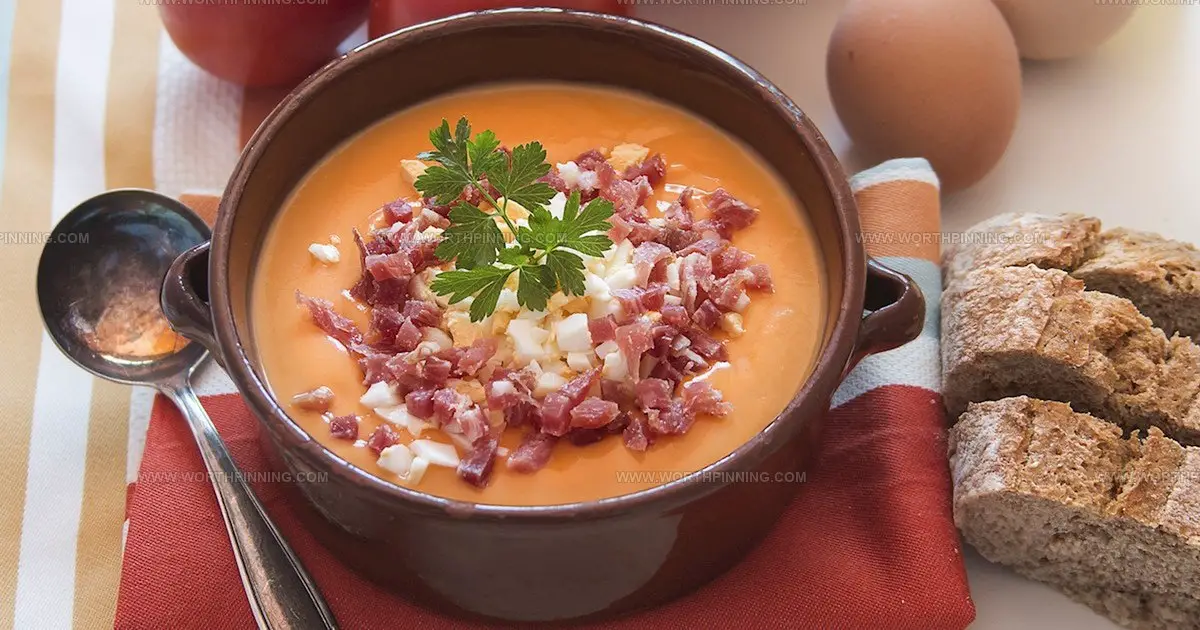
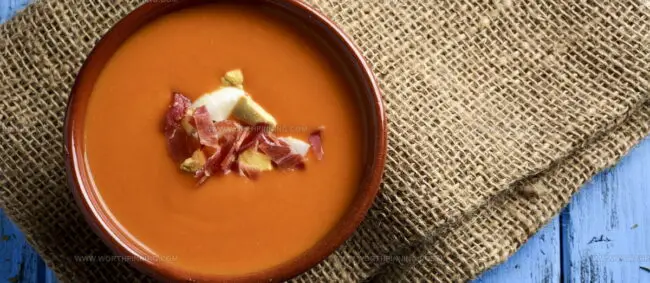
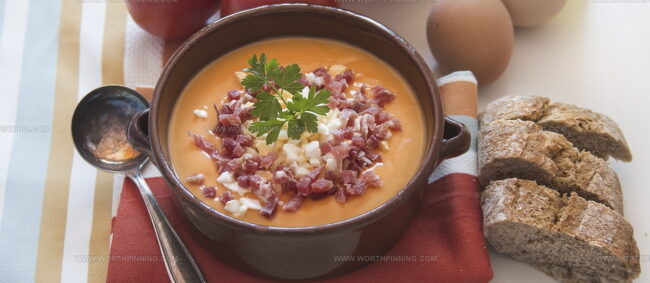
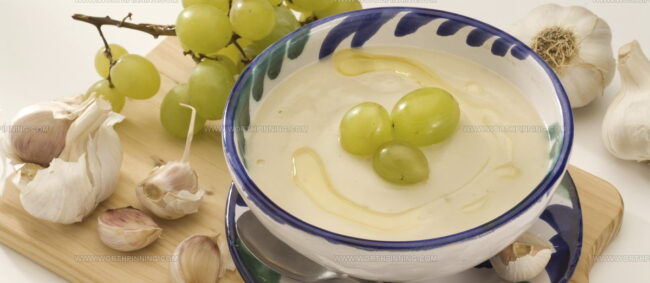
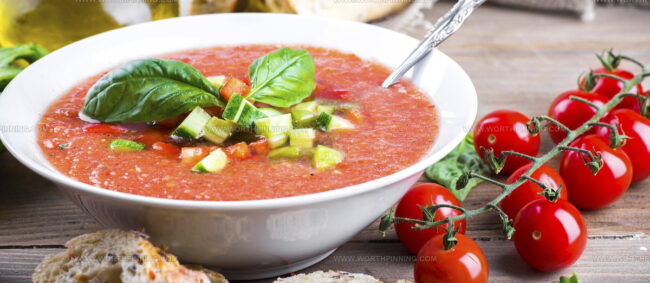
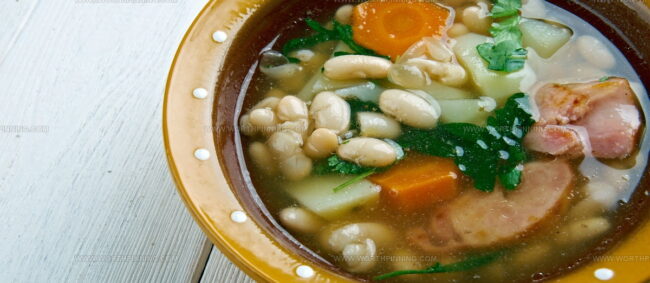
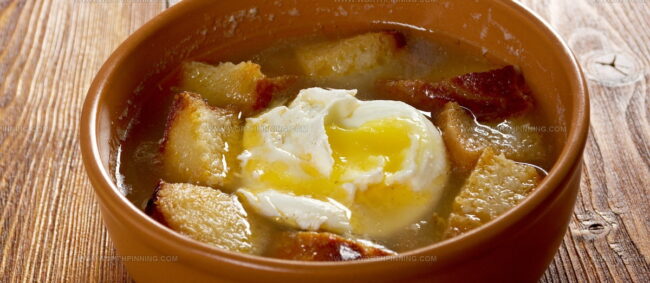

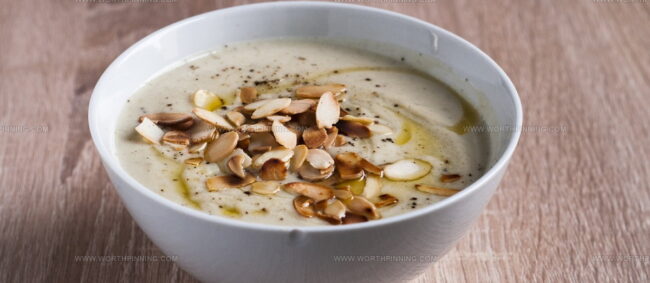
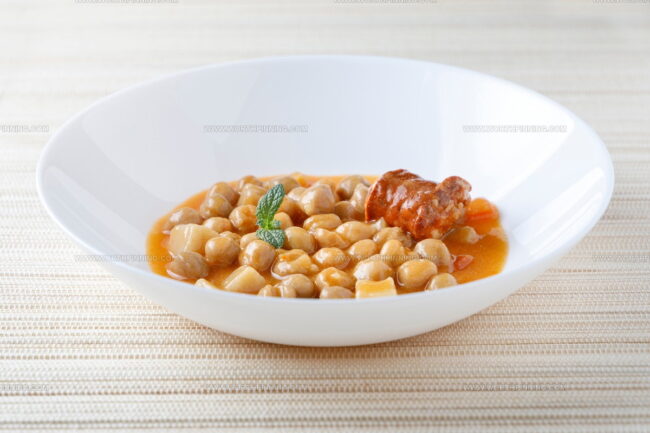
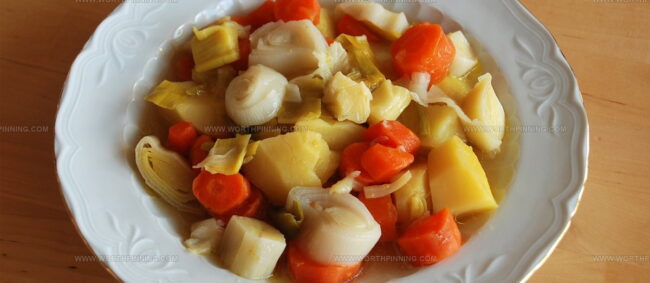


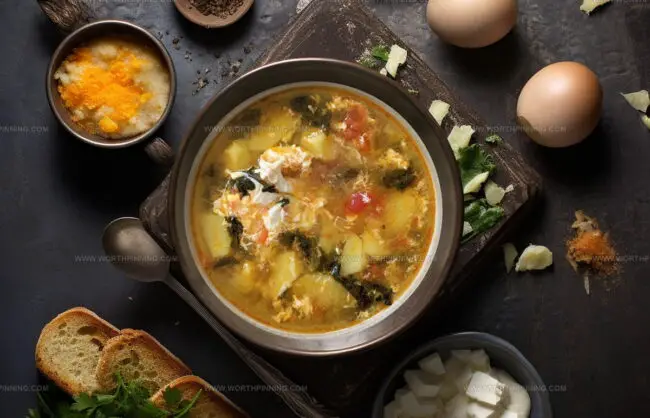
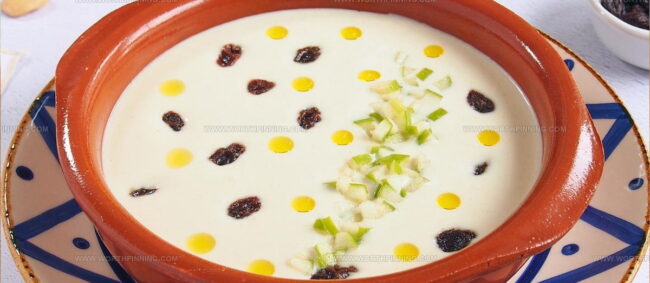
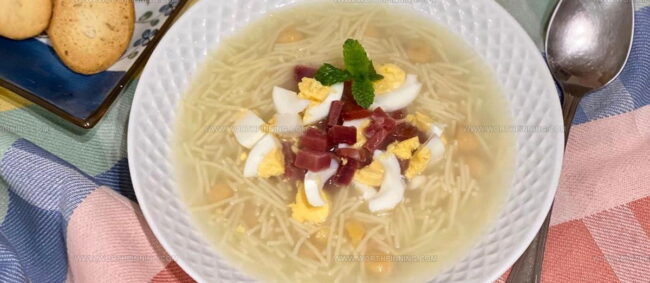
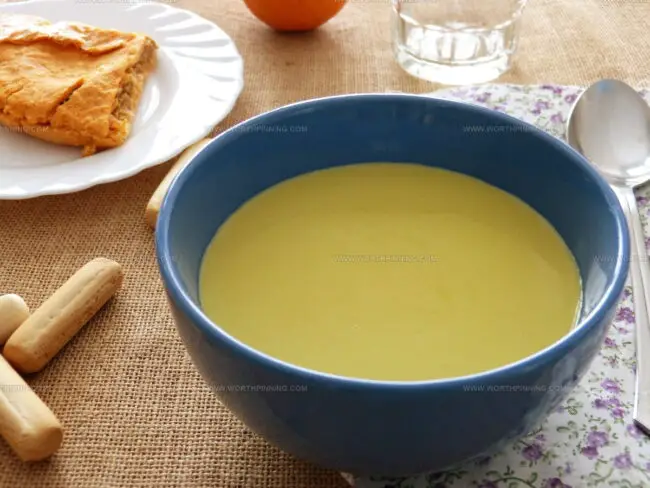
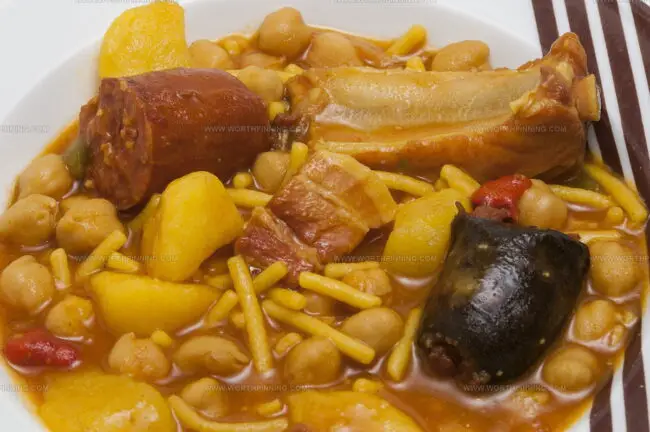

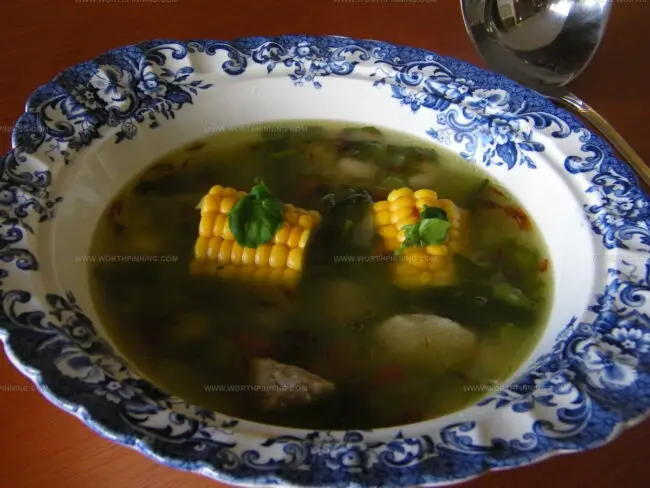
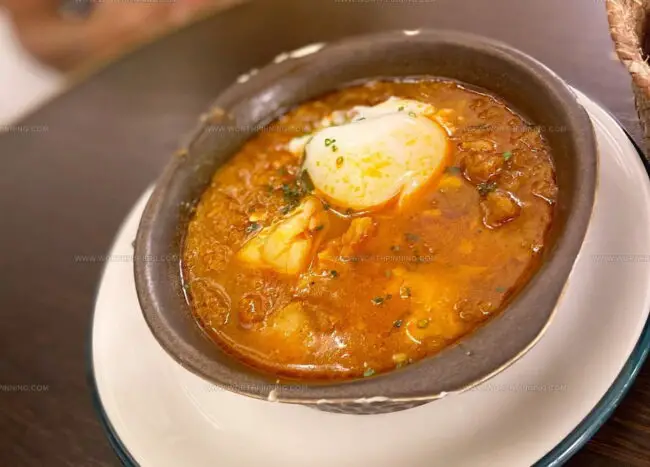
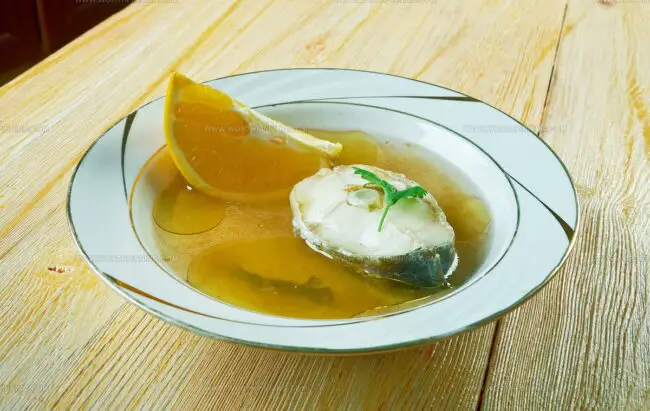
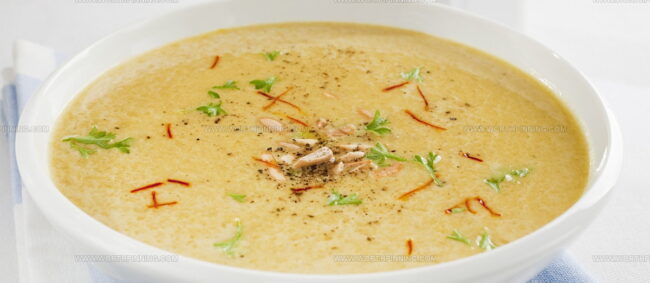
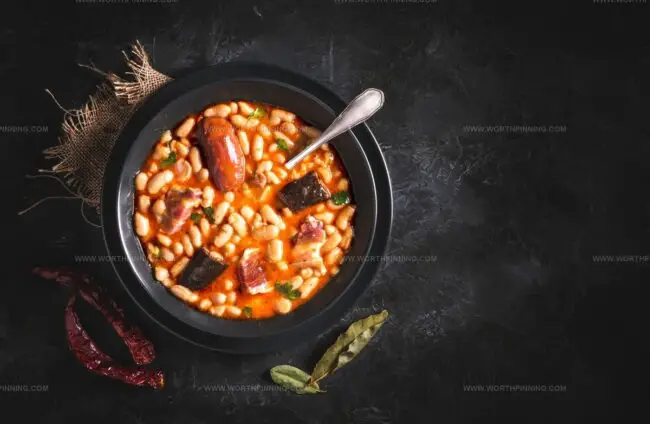
Ethan Miller
Founder & Lead Content Writer
Expertise
Education
Portland Community College
Culinary Institute of the Pacific
Ethan’s culinary journey began in his grandmother’s kitchen, where he first learned to play with flavors and ingredients. With formal training in culinary arts and a deep love for international cuisines, Ethan’s goal is to share the joy of cooking with others.
He believes food is all about creativity and bringing people together, one meal at a time. When he’s not experimenting with new dishes, he enjoys hiking in the Oregon wilderness and discovering fresh, local ingredients.